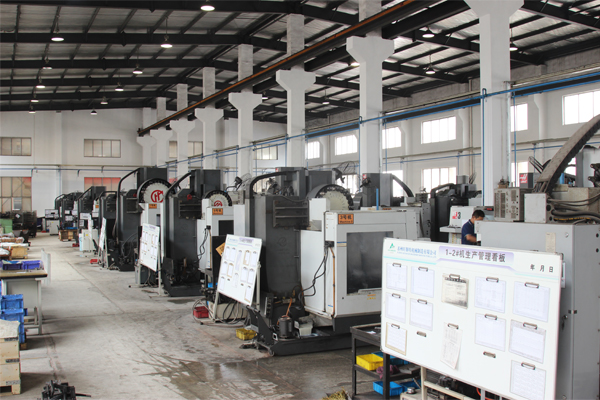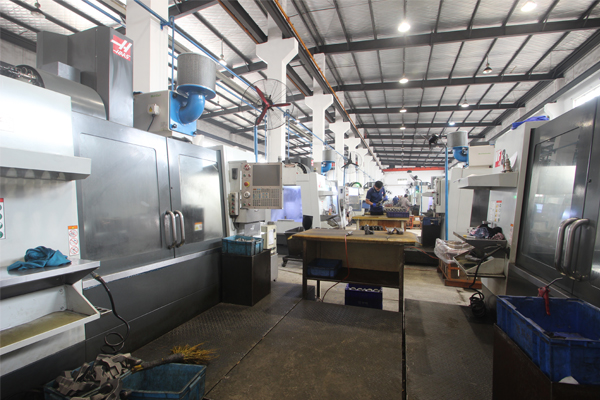In the production of aluminium alloy die casting, the most common way of die damage is crack lines and cracks. Stress is the primary cause of die damage.
一、In the process of die casting production
1、Mold temperature
Die should be preheated to the necessary temperature before production, otherwise when high temperature liquid metal filling occurs chilling, causing the temperature gradient of the surface and inner layer of the die to increase, constituting thermal stress, making the appearance of the die crack, or even crack.
In the process of production, the temperature of the die rises from time to time. When the temperature of the die is overheated, it is easy to stick to the die, and the movable parts fail to work properly, resulting in the damage of the appearance of the die.
Cooling temperature control system should be set up to insist that the task temperature of the die should be within the necessary limits.
2、Alloy filling
Mold filling at high pressure and high speed is bound to cause severe impact and erosion on the die, so mechanical stress and thermal stress occur. In the process of impact, liquid metal, impurities and gases will also have complex chemical effects with the surface of the die, and accelerate the occurrence of corrosion and cracks. When the liquid metal is wrapped with gas, it will expand in the low pressure area of the cavity first. When the gas pressure rises, an inward explosion will occur, pulling out the metal particles on the surface of the cavity to form damage, and cracks will occur due to cavitation.
3、Die opening
In the process of core pulling and die opening, mechanical stress will also occur when some components are deformed.
4、Production process
In the production process of each aluminium alloy die castings, the periodic temperature change occurs on the surface of the die due to the heat exchange between the die and the liquid metal, which causes periodic thermal expansion and shortening, and periodic thermal stress. For example, when pouring, the exterior of the die is subjected to compressive stress due to temperature rise, and when the die is ejected from the casting, the exterior of the die is subjected to tensile stress due to temperature drop. When the alternating stress repeats, the accumulated stress inside the die becomes larger and larger. When the stress exceeds the limit of the data, cracks occur on the surface of the die.
二、Blank Forging
1、Some moulds produce only a few hundred pieces, showing crack lines, and cracks develop rapidly. It can be that only the shape and size of steel are covered during forging, while the loose defects such as dendritic crystals, mixed carbides, shrinkage holes and bubbles in steel are lengthened and elongated along the processing method, forming a streamline, which has a great influence on the final quenching deformation, cracking, brittle cracking and ineffectiveness tendency in the process of application in the future.
2、Cutting stress occurring in turning, milling, planer and other finishing processes can be eliminated by central annealing.
3、Grinding stress occurs during grinding of quenched steel, friction heat occurs during grinding, softening layer and decarbonization layer occur, which reduces the heat entrapment strength and easily leads to hot cracking and early cracking. After finishing grinding, H13 steel can be heated to 510-570 (?) C and annealed with 25 mm thickness for one hour.
4、Stress occurs in EDM. There is a white layer on the surface of the die, which is rich in electrodes and dielectrics. It is hard and brittle. There will be cracks and stresses in the layer itself. In EDM, the frequency should be used to minimize the white layer. Polishing must be carried out to remove the white layer, and tempering should be carried out at the third tempering temperature.
三、Mold disposal process
The improper heat treatment will lead to die cracking and scrap too early. Especially, only tempering, no quenching, and then surface nitriding process will show surface cracking and cracking after thousands of die casting.
The stress occurring during quenching of steel is the result of superposition of thermal stress in cooling process and structural stress in phase transformation. Quenching stress is the cause of deformation and cracking, and it must be tempered to eliminate the stress.
In the Process of Die Processing and Manufacturing
1、Quality Problems of Blank Forging
Some moulds produce only a few hundred pieces and show cracks, and cracks develop rapidly. It can be that only the shape and size of steel are covered during forging, while the loose defects such as dendritic crystals, mixed carbides, shrinkage holes and bubbles in steel are lengthened and elongated along the processing method, forming a streamline, which has a great influence on the final quenching deformation, cracking, brittle cracking and ineffectiveness tendency in the process of application in the future.
2、Cutting stress occurring in turning, milling, planer and other finishing processes can be eliminated by central annealing.
3、Grinding stress occurs during grinding of quenched steel, friction heat occurs during grinding, softening layer and decarbonization layer occur, which reduces the heat entrapment strength and easily leads to hot cracking and early cracking. After finishing grinding, H13 steel can be heated to 510-570 (?) C and annealed with 25 mm thickness for one hour.
4、Stress occurs in EDM. There is a white layer on the surface of the die, which is rich in electrodes and dielectrics. It is hard and brittle. There will be cracks and stresses in the layer itself. In EDM, the frequency should be used to minimize the white layer. Polishing must be carried out to remove the white layer, and tempering should be carried out at the third tempering temperature.






